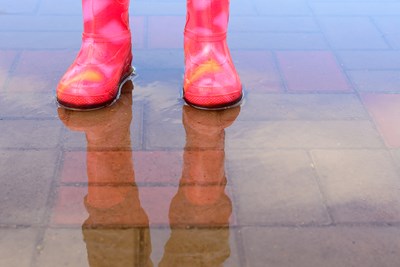All warts can be uncomfortable, if not downright painful. Plantar warts, however, appear on the heel or balls of the feet, which means they receive almost constant pressure. This causes them to grow under the layer of callus most people develop on their feet, thus they are often much flatter than palmer (hand) warts or those that appear elsewhere. While they are generally about the size of the tip of a pinkie, they can grow to be larger or even develop in clusters, called “mosaic warts.” Because of their shape and size, people often think a plantar wart is a corn or small spots of callus build up. They may feel hard or even grainy. While they are contagious and do spread from person to person, in a majority of cases they are not a major health risk.
Plantar Wart Causes
Like all warts, plantar warts are caused by the human papilloma virus (HPV)—unlike the warts commonly associated with this virus, they are not the same strain as the ones that grow on the genitalia. In fact, not all of the less dangerous strains will even grow on the feet. Most prefer other areas of the body. The few that do like the soles of the feet manifest after the virus is contracted through the skin. The virus grows readily in warm, moist environments, making walking around public areas like locker rooms a bad idea.
When there are small cuts or cracks in the skin, the feet are especially susceptible. In fact, just the softening of the skin that occurs when your feet get wet for a long time (such as happens in a swimming pool) can be sufficient to allow the virus room to grow. Since everyone’s immune system differs, not everyone may develop warts the same way. Some may not get them at all, while others can wind up with several. Luckily, for most people the complications of such warts are limited to minor muscle or joint pain caused by a change in the way you step while walking, to avoid placing pressure on a tender area.
Plantar Wart Symptoms
Once the virus takes hold, a small growth on the bottom of the foot, particularly the ball or heel will develop. Callus (hardened skin) may grow over the area, which is often rough or hard, as it grows inward. It may also just look like a small lesion in the midst of the normal pattern of skin on the foot. Some of the warts develop a small black dot in the center. The common misconception is that this is the “seed” of the wart, when in fact it is a blood vessel that has grown into the wart and clotted. The area may be tender to put pressure on.
Plantar Wart Treatments
Some plantar warts can be treated at home. Others will disappear on their own after around two years, once the virus has run its course. However, if you aren’t positive that you have a wart, at home treatments fail, it keeps coming back, or several develop, it’s usually a good idea to see a doctor for assistance. Additionally, those with immune disorders, such as HIV, or a disorder that decreases feeling in the feet, such as diabetes, it’s a good idea to see a doctor right away.
Plantar Wart Prevention
To avoid developing plantar warts, practice careful hygiene. Do not touch your own or other’s warts, and wash your hands carefully when you have to. Wear shoes in public areas, like swimming pools, and keep your feet clean. Change socks often if you tend to perspire excessively or work in a moist environment. While this does not guarantee you won’t develop plantar warts, it’s certainly helps. Although the human papilloma virus vaccine is often an effective treatment for plantar warts, it does not guarantee prevention. It is not targeted at these types of HPV but towards the genital strains.



